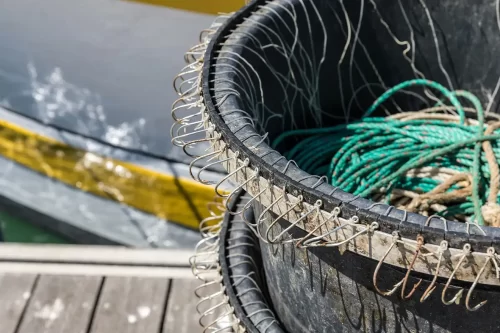The satellite-based Automatic Identification System (AIS) is great for locating vessels, but it’s not fully reliable for identifying them. AIS broadcasts coded messages that include information about a vessel’s identity such as its name, ship type, size and callsign. The messages also include a nine-digit Maritime Mobile Service Identity (MMSI) that is supposed to be unique to each vessel.
It’s a good system, but there’s lots of room for error because each operator has to manually enter their MMSI code along with all of the other identifying information. In some cases, the codes are incomplete or arbitrary. We have seen MMSI’s in which a vessel operator simply keys in numbers in sequence such as 123456789. We also see MMSI’s comprised of the first three numbers, which represent the country of origin, followed by all zeros such as 412000000. These appear to be intentional attempts to avoid identification.
That’s why we don’t rely on AIS messages alone for identifying fishing vessels. Arbitrary or incomplete MMSI codes leave us with little to go on, but when an AIS broadcast includes a call sign or vessel name, we can verify its identity by matching them with other sources. Those generally include vessel registries from their flagged country or the jurisdiction that may have issued their fishing licenses.

Vessel registries don’t usually include MMSI numbers, but they often include other important identifying details such as a vessel’s size, gross tonnage, fishing gear, target species, and fishing authorizations. We have to look through the registry to find specific pieces of information we can match to the information in the AIS signal. These identifiers include the name of the vessel, call sign, flagship country, type of vessel or International Maritime Organization number—another number that is unique to each individual vessel. The more pieces we can match between the AIS data and the vessel registry, the more confidence we have that we’ve correctly identified the vessel for a given track.
So far, we have confidently identified several thousand fishing vessels by matching their broadcasts with registries identifying the type of boat, the name of the boat and the call sign. But there are tens of thousands of vessels that consistently report fishing, meaning that there are many that we can’t yet fully identify. Without verification, we cannot yet say with confidence what type of fishing they’re doing.
We are developing algorithms to automate this process of matching vessel registry information with corresponding fields in AIS messages. But there are challenges. Each jurisdiction maintains its own registry, whether that’s a specific country, or a group of countries within one Regional Fisheries Management Organization (RFMO). We are working to obtain access to as many registries as possible, although some have been out of date or poorly maintained for years.
In some cases, even when a registry is up to date, it may not contain enough information for a confident match. That’s when our analysts head to the internet to do some investigative work. A Google search of the vessel name or the MMSI might bring up other ship monitoring sites that contain photos or old AIS messages with more information. Occasionally an article featuring a boat, or a photo posted by the captain or one of the crew members provides valuable clues about specific fishing gear or the kind of fish they catch.
That’s not always the case, of course. When there’s just not enough information to confirm a vessel’s identity, it goes on our list of unverified fishing vessels. Its track still shows up on Global Fishing Watch for everyone to see.
Of the thousands of vessels we have yet to confirm, we know the vast majority are doing the right thing. But there will always be those who are trying intentionally to avoid detection and identification because they’re engaged in illegal activity. By broadcasting false or incomplete AIS signals, they may shed doubt on their identity and weaken any evidence that could be used against them. Verifying a ship’s identity by matching their AIS broadcasts to outside sources provides an additional measure of confidence when a bad actor is caught.
Equally important to fisheries management and conservation, our growing list of confirmed fishing vessels will help to expand our understanding of how fishers from different regions use the world’s oceans.


